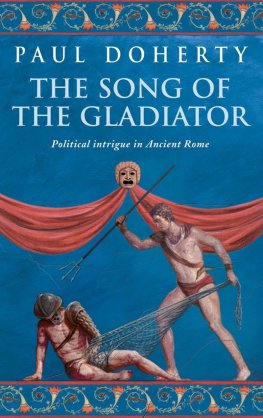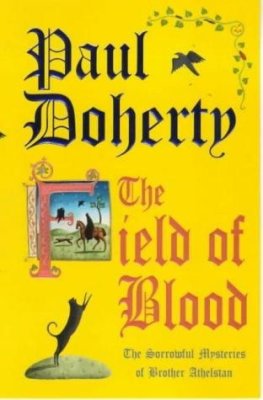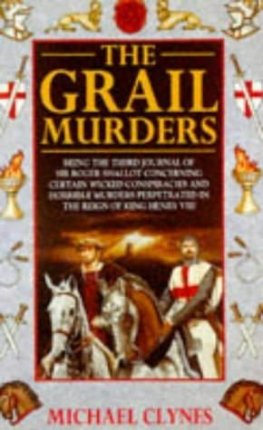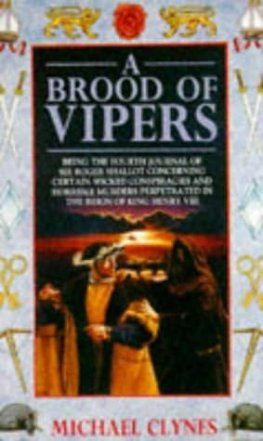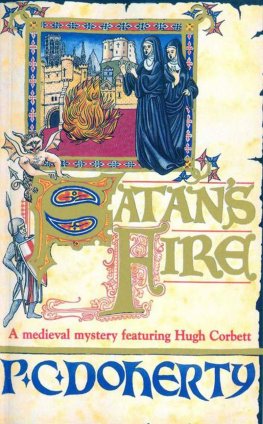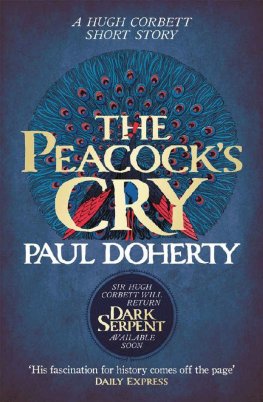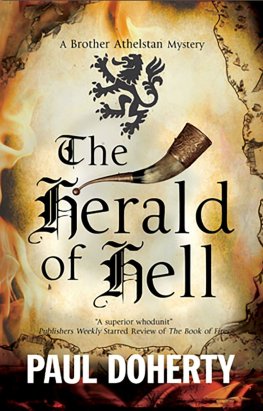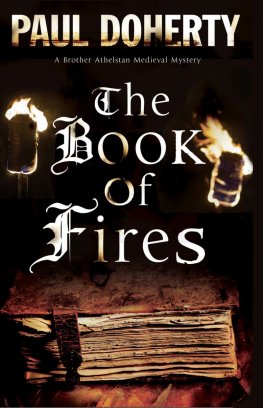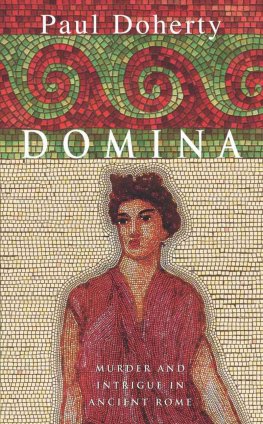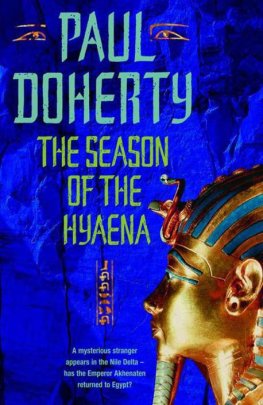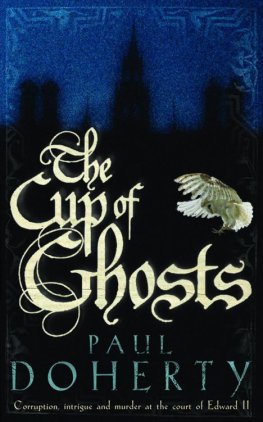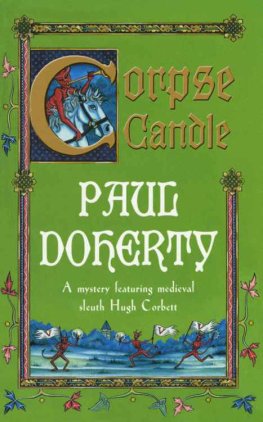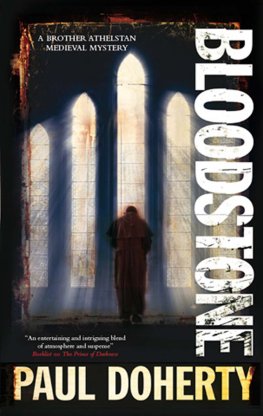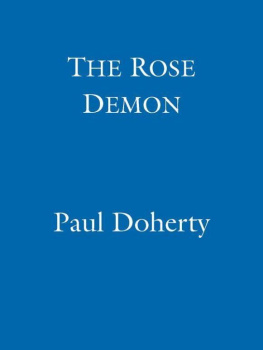Paul Doherty - Candle Flame
Here you can read online Paul Doherty - Candle Flame full text of the book (entire story) in english for free. Download pdf and epub, get meaning, cover and reviews about this ebook. year: 2014, publisher: Severn House Publishers, genre: Detective and thriller. Description of the work, (preface) as well as reviews are available. Best literature library LitArk.com created for fans of good reading and offers a wide selection of genres:
Romance novel
Science fiction
Adventure
Detective
Science
History
Home and family
Prose
Art
Politics
Computer
Non-fiction
Religion
Business
Children
Humor
Choose a favorite category and find really read worthwhile books. Enjoy immersion in the world of imagination, feel the emotions of the characters or learn something new for yourself, make an fascinating discovery.
- Book:Candle Flame
- Author:
- Publisher:Severn House Publishers
- Genre:
- Year:2014
- Rating:3 / 5
- Favourites:Add to favourites
- Your mark:
- 60
- 1
- 2
- 3
- 4
- 5
Candle Flame: summary, description and annotation
We offer to read an annotation, description, summary or preface (depends on what the author of the book "Candle Flame" wrote himself). If you haven't found the necessary information about the book — write in the comments, we will try to find it.
Candle Flame — read online for free the complete book (whole text) full work
Below is the text of the book, divided by pages. System saving the place of the last page read, allows you to conveniently read the book "Candle Flame" online for free, without having to search again every time where you left off. Put a bookmark, and you can go to the page where you finished reading at any time.
Font size:
Interval:
Bookmark:
Paul Doherty
Candle Flame
PROLOGUE
Bloodletting: a technique to restore the humours.
The Guardian of Sin, that Creature of Dread from Hell, had certainly set its mark on London during the freezing month of February, the year of Our Lord 1381. Candlemas had been honoured with taper-light and candle-bright in all the city churches, but the hiss of Hells adders and the venom of the ancient serpent, or so the chroniclers would have us believe, could be heard in the very air. The Demon of the Abyss had allegedly set up camp in the narrow spires of those same London churches. According to the monastic scribes, The demons who sheltered there peered out between the bells to seek their prey before tripping merrily along the narrow alleys of Southwark to kiss and caress their legion of followers. Foul deeds were perpetrated, grievous sins committed and none more so than in the spacious Southwark tavern The Candle-Flame which lay along the riverside, a mere bow shot from the Church of St Mary Overy. The Candle-Flame was a majestic hostelry built, enlarged and developed on the profits of the recent war in France by Mine Host Simon Thorne, a former captain of hobelars who had served with such distinction under Sir Walter Manny. The Candle-Flame was certainly a house built on blood; nevertheless, it had prospered from the busy river trade and was established as a popular resting place for the constant pilgrimages to Canterbury, Glastonbury, Walsingham, the Holy Blood of Hailes and the Black Virgin of Willesden. The Fraternity of the Water Men, the Guild of Mudlarks who scavenged the banks, not to mention the Society for the Saving of Souls former sailors prepared to go to help any craft in difficulty on the Thames were all worthy covens that met at the tavern to discuss business and celebrate their achievements.
The Candle-Flame was a landmark in Southwark. The taverns shiny, grey-tiled roof capped a soaring three-storey mansion fashioned in brick and timber and eked out with lathe and plaster, its brickwork a smart red, the plaster snow white, its timbers a glossy black. The hostelrys northern entrance facing the river consisted of a splendid water gate, a towered structure approached by a firmly embedded jetty which swept along to broad entrance steps. The southern side boasted a majestic battlemented gatehouse which led into an expansive cobbled stableyard bound by the tavern proper and on the other three sides a range of two-storey buildings comprising bake house, wash house, brew house, larder, stables, storerooms and a well-furnished smithy. The Candle-Flame was famous for its grotesquely carved gable ends with the grinning faces of monkeys, satyrs, wodwoses and fish-men. Inside stretched a great taproom called the Dark Parlour because of its polished oaken pillars, rafters, panelling and other woodwork. It was a truly comfortable taproom with proper tables, a cushioned stool area and window seats. The thick rope matting across the floor was scrupulously cleaned at least once a week. The tavern windows were filled with horn and close-shuttered both within and without; a few of these were even glazed in fine glass delicately painted with heraldic insignia. On either side of the Dark Parlour, with its great fire roaring in the cunningly carved mantled hearth, ranged the kitchens, refectories, butteries, herb parlours and pantry stores. Bread was baked on the premises and the sweet, fresh smell of the pure manchet mingled with the cured hams and flitches of smoked bacon, as well as the dried vegetables and herbs all hanging in their snow-white string baskets from the Dark Parlours polished beams. Above the ground floor stretched the middle chambers, as Mine Host proudly described them: well-furnished rooms with soft four-poster beds, warmed by dark-blue curtains and costly embroidered counterpanes. The rest of the furniture was handsomely carved and delicately inlaid. Pictures, triptychs and crucifixes, each covered with a gauze veil which could be pulled back, decorated the shiny cream plaster walls above gleaming wooden wainscoting. Candlesticks with a carved hand clasping the socket provided light. Wire-mesh braziers and silver chafing dishes exuded warmth whilst guests could use the elmwood coffers, aumbries and cypress chests to stow their belongings. On the floor above ranged less luxurious rooms and, just under the roof, lay the garrets and cocklofts with their truckle beds and meagre sticks of furniture.
However, The Candle-Flame was famous for more than its magnificent appearance, hot stews of venison and pike and delicious ale brewed on the premises or even its comfortable lodgings. The tavern also possessed the Barbican: a grey-stone, two-storey soaring tower which stood, solitary and forbidding in the Palisade, a broad stretch of wasteland to the east of the tavern. The Palisade still served as the execution ground for Southwark, the gallows and execution block being erected close to the Barbican. Gossips hotly debated this grim donjons origins. Some argued that it had been built during the reign of the present kings great, great grandfather, when the Crown of England used the ancient wharves and quaysides of Southwark to provision war cogs ready to sail out and fight the galleys of France, which nosed like savage wolves into the Thames Estuary and along Londons great river. Over the years the Barbican had ceased to be a weapon store or fighting tower. Mine Host Simon Thorne often hired it out to parties who might need seclusion, privacy or protection. On 13 February 1381, the eve of the Feast of St Valentine, Edmund Marsen, collector of the poll tax along with Mauclerc, his scribe, Hugh of Hornsey, a captain of archers, and five bowmen had arrived at The Candle-Flame and taken up lodgings in the Barbican. They could well need such a strongly fortified tower, with its heavy oaken door, latticed eyelet and solitary shuttered window on the second storey. Marsen was responsible for collecting the poll tax along the south bank of the Thames. He had been most ruthless in pursuit of what was due to his master, John of Gaunt, uncle to the boy king, Richard II, and self-styled Regent to the kingdom during the minority of his nephew. Marsens name was hated, both high and low. A cruel, avar-icious man, Marsen had squeezed the families and communities to the south of London in a grip as tight as any hunters snare. No one dare oppose him, at least not yet. Marsen, full of malicious glee at his achievement, had broken his journey at The Candle-Flame to rest, take stock and plot even further plundering on behalf of his royal master. Marsen was a land pirate, the most feared of his kind. He had swept into the hostelry demanding the very best for himself. Mine Host Simon Thorne, tall and rubicund-faced, who acted the ever-smiling, ever-merry tavern master, had been expecting him. The Palisade, that stretch of rough, common ground which ran down to the river bank, had been cleared and the Barbican prepared for Marsen, Mauclerc and their military escort. Marsen had demanded the very best food, so he dined on the likes of charlet and pork with eggs, as well as roast capon in a highly spiced black-pepper sauce, tansy cakes and other delicious dishes, accompanied by tankards of The Candle-Flames famous ale brewed by Thorne himself and popular all along the riverbank for its taste and potency.
Mooncalf, chief ostler and cleaner of the latrines and garderobes at the tavern, was the one to rouse Marsen after his nights of gluttony, drunkenness and lechery. Early on the morning of 17 February, Mooncalf reluctantly prepared to do this. He wrapped a cloak about himself, gripped the lantern horn more tightly in his ragged, mittened hand, using the other to pull over the deep capuchon to protect his head against the icy cold breeze which bit as sharp as a razor. For a while Mooncalf stood in the tavern porch staring up at the clearing sky. This had been a cruel, iron-hard winter. Would spring ever come, but what then? Mooncalf was most fearful. London seethed with unrest like oil in a fiery hot skillet. The king was a child and his uncle, John of Gaunt, ruled with a mailed fist from his magnificent palace of the Savoy. Gaunt was depicted by his many enemies, and there were many, as the Prince of Hell and his ministers the Minions of Darkness. Opposition was growing like weeds on a dung hill. In the shires surrounding London and now the great city itself, the poor, taxed and tied to onerous burdens, had formed their own coven, the Great Community of the Realm; its leaders, the Upright Men, were feverishly plotting the Day of Swords, the Season of the Great Slaughter. On that fateful day the poor would rise in rebellion. They would create a new commonwealth free of any prince, prelate and pontiff; it would be a time of blood, when deep-rooted grievances would be settled and the ground cleared so the New Jerusalem could arise along the muddy banks of the Thames. The doggerel chant of the Upright Men, When Adam delved and Eve span who was then the gentleman? was proclaimed all over the city, spiked on church doors, the Great Cross at St Pauls, the Standard in Cheapside and even the splendid gateway to the Savoy palace. Gaunt retaliated with hangings, disembowellings and quarterings at the Elms in Smithfield, Tyburn and Cheapside. Severed heads, boiled, pickled and tarred, decorated the execution poles above the great gatehouse on London Bridge. Blood bred blood. The Upright Men fought savagely against the tightening, panther-like embrace of Gaunt, or so Mooncalfs master Mine Host Thorne described it, and the taverner was well versed in his horn-book. The Upright Men had only to bray their trumpets and they would summon up all the dark dwellers from the Halls of Shadows, Londons squalid slums, be it Whitefriars or, Mooncalf shivered, here in Southwark. The Children of the Twilight, the Knights of the Knife, the Squires of the Sewer, the Pages of the Pit, all sharp as the tooth of any saw, waited impatiently for the black banner of anarchy to be raised. Hatred seeped the streets and alleyways of London like the curdling venom of a subtle serpent. The Upright Men encouraged, nourished and supported this, their envoys coursing through a London crowd like hungry pikes in a mere. The Earthworms, the horsemen of the Great Community of the Realm, all garbed to terrify, would appear abruptly in the city, pouring out of some alley mouth to clash with Gaunts mounted retainers. They had recently captured one of the Regents tax collectors, Owain Tabbard, in Cricklegate. The Earthworms had surrounded him, beat him, robbed and stripped him, then set him back on his mount with his face turned to the horses rump, holding its tail between his hands instead of a bridle. The Earthworms had paraded Tabbard through the streets before cropping his ears and nose and throwing him into a filthy lay stall. Another collector had suffered even worse. He had been ambushed and decapitated, his severed head left in blood-filled wineskin close to the main gate of the Savoy.
Font size:
Interval:
Bookmark:
Similar books «Candle Flame»
Look at similar books to Candle Flame. We have selected literature similar in name and meaning in the hope of providing readers with more options to find new, interesting, not yet read works.
Discussion, reviews of the book Candle Flame and just readers' own opinions. Leave your comments, write what you think about the work, its meaning or the main characters. Specify what exactly you liked and what you didn't like, and why you think so.



